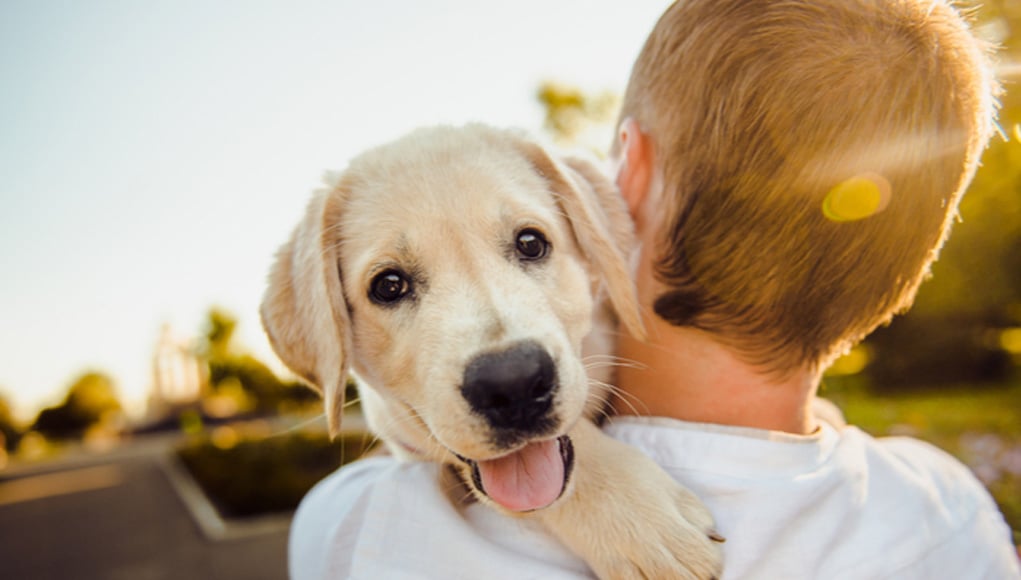Adding a new canine companion to your household is a life-changing event. But, how will you know when is the best time to get a puppy?
You surely don’t want to end up giving your fido away in shelters just because you weren’t prepared for such big responsibility.
So, asking this question is imperative before making a decision.
If you’re planning to welcome a new bundle of joy to your home and you want to:
- Know the factors you should consider in determining the best time to get a puppy
- Learn some tips on how to prepare your home for a new companion
- And how to find the right dog for you
This article is the guide you need. So, without further ado, let’s get right into it.
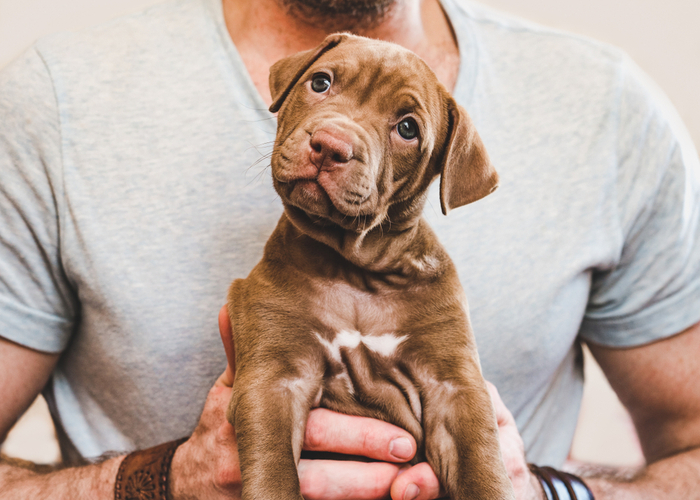
How To Determine the Best Time To Get a Puppy?
Answering this question needs a lot of time to consider various factors in your life and your dog’s.
So, today, we’re breaking down these factors.
But before that, we’ll discuss at what age you should bring the puppy home.
At What Age Should You Get the Puppy?
Puppies are very reliant on their mothers’ milk and survival skills until they are eight weeks old.
Thus, it is advisable to wait until the puppy is two months old before separating them from their mother.
They will miss her at first but will slowly adjust to their new surroundings and forget about her.

Factors to Consider Before Getting a Puppy
You have to consider many factors before buying or adopting a puppy because it’s a huge investment that demands time and money.
Here are some of them:
The Season
The first factor that may influence your decision is the season. Different seasons call for various challenges and adjustments.
So, to ensure that your puppy will have an easier adjustment period, it is something worth considering.
Spring
Pros: Once the winter fades and the temperatures start to climb, the perfect dog-walking weather comes.
House training should be easier as well at this time.
Cons: The downside of spring is when it becomes wet for most parts due to thunderstorms, it can be hard to do the training outdoor.
Summer
Pros: In the early and late summer, the weather is mild to warm, and the school holidays are up.
So, many would agree that this is the best time to get a puppy aside from spring.
There are also many opportunities for your canine to explore the outdoors, discover new adventures, and socialize with other dogs.
They can feel the grass, gravel, and mud under their feet and balance on a wooden log since it’s not slippery anymore.
So, you and your pup can focus on their development.
Cons: The heat of the sun in the middle of the summer can take a toll on you and your pup’s activity levels and health.
Some people also love to spend their holidays on vacations.
But getting a new puppy right before you go for a two-week vacation is not a good choice.
It will only complicate training, bonding, and creating a routine when you return.
Autumn
Pros: The eye-pleasing autumn colors are a beautiful backdrop for a dog walk and the temperature at this time is cooler.
Cons: Busier working households may struggle to find time to be at home and train and establish a connection with the new pup.
Winter
Pros: You may have more time to spend with your dog during the holiday season.
Cons: The flip side is there are no outdoor socialization opportunities during such a cold, icy season.
Your pup can’t explore the outside world due to cold temperatures too.
And if you’re attending a lot of seasonal events, it’s not advisable to leave your pup when it has only joined your family.
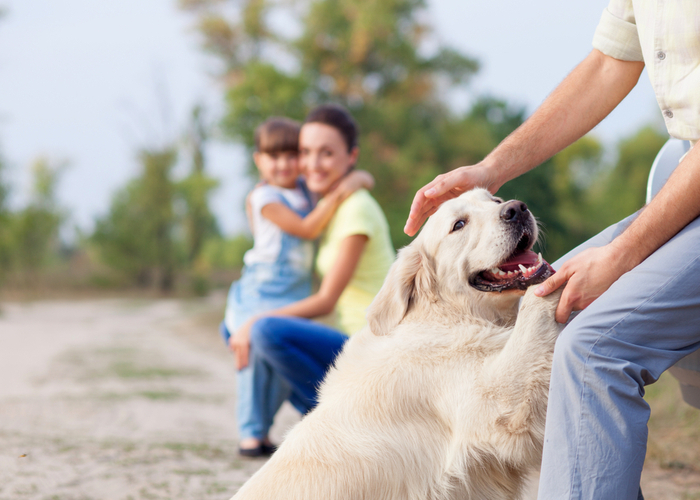
Your Family Situation
When planning to bring a new pup to your home, you have to think about your family situation and marital status.
It’s because they play a significant role in making your home conducive for raising fidos.
If you’re single
There’s no doubt that a calm and mild-tempered pup will make an excellent companion for life.
However, do you have the time and finances to raise and take care of the puppy by yourself?
Attending training and visiting a vet require funds to pay for bills and time to accompany your fido.
At the early stages of your canine’s life, you’ll have him undergo vaccinations, deworming, as well as spaying or neutering.
You also need to ensure that you can walk your dog regularly and bring him to dog parks to socialize with others, and it requires the luxury of time.
Lastly, can you provide your dog’s essential needs such as food, treats, collar, medicine, etc.?
Meditating on these questions can help you know if you’re ready to bring a new member to your household.
If you’re married
Raising a pup would be easier for couples because you have someone to share the responsibility of parenthood with.
If you’re both working, you can trade off coming home and feeding your pup during lunch for the first few months until your puppy becomes accustomed to your home.
However, if you and your spouse both work long weeks or shifts and travel a lot, it may not be the best time to get a puppy.
It would help if you had time to be at home, bond with, and train your pup.
If you’re about to have a child
If you’re expecting a child, a new pet and your infant can grow up together.
However, having a newborn and a pup is like having two children at the same time.
It isn’t practical to introduce two beings to your home who’ll wake you up at different times if you’re already occupied with work.
If you already have a child
Juggling both a career and raising a kid is already challenging, and naturally, you’ll want to spend time with your baby once you come home.
That means less time for the pup, and chances are he’ll get depressed if you cannot give the time and attention he demands.
Even if your young child wants a pup, it isn’t wise to get one if you’re not ready to have another child because it can make you feel more strained.
On the other hand, if your children are mature enough to help take care of a pet, a puppy can be the ideal companion for them.
It can also help them become responsible and active.
Keep in mind, though, that once the glamour of a puppy wears off, your children may not be as helpful.
When that happens, most puppy care will be your responsibility.
However, you have to ensure that none of your family members suffer from dog allergies before getting a puppy.
Getting a dog only to discover later that a family member is allergic to it can be a terrible experience for everyone.
If you have other pets
Are you currently living with a dog or cat in your home to whom you need to introduce the new pup?
If you are, you need to consider how the addition of a new pup can affect the overall dynamics of the household.
Your first puppy might be aggressive to the new pup. So, it would help if you’d educate yourself about how to introduce dogs.
It can save your new pup from attacks and your heart from heartaches.
Your Living Arrangements
The place you’re living also plays a significant factor in whether or not it’s the best time for you to get a puppy.
Do you live in a home that you own, or do you rent?
If you rent, you have to check your complex’s or landlord’s policies to see if pets are allowed on the premises.
Consider the lifestyle a puppy would have in your current home once you’ve confirmed that dogs are welcome.

Backyard or any walking space
Is there a backyard for him to smell and play in, or will he stay in a small balcony or patio at best?
If you don’t have access to a backyard, that doesn’t mean you can’t get a puppy because a dog park and a safe walking area would do.
If neither a dog park, backyard, or walking area is available, you may have to wait until you find a comfortable place for your pet.
Interior space
The interior space and safety of your home are something worth considering as well.
Do you have ample space for a crate or dog bed?
Your puppy will grow big, especially if it belongs to a large dog breed. So, if your space is limited, your pet will struggle and become restricted.
How It Can Affect Others
Every puppy will go through a destructive phase in their lives as well.
So, it’s only appropriate to think about the potential damage that may occur and how it can affect your roommates and landlord.
Your Schedule and Obligations
If you think your family and living situation allows you to get a puppy, the last thing you have to consider aside from the schedule is your work obligation.
It will be best to get a puppy when you’re on vacation or you’re not busy with work and other responsibilities.
That way, you can spend time, train your puppy and establish a routine for you two.
But if you have travel plans, whether it’s for work or pleasure, it would be wise to avoid getting a puppy at that time.
You may be able to hire a dog sitter or walker, but it’s only a temporary solution since the best companion for your pup is you.
If you’re willing to put in a lot of work and invest in a fido despite all the odds, then it’s time to prepare yourself and your place for a new family member.
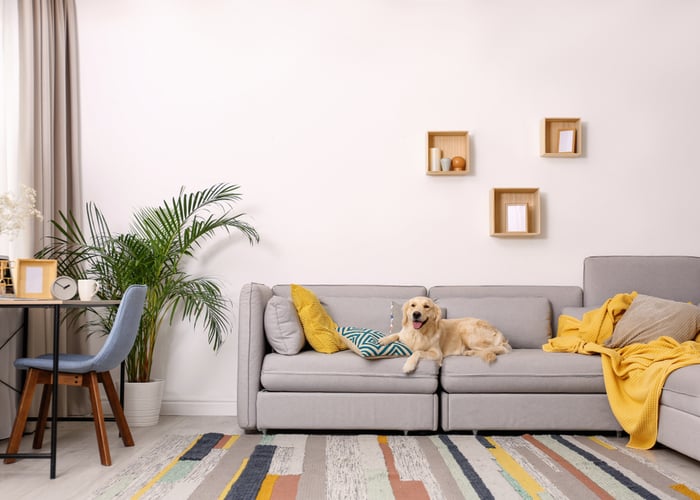
Tips on How to Prepare for a New Puppy in Your Home
Here are some steps you can take to ensure your future fido will have a comfortable life with you.
Puppy-proof your home
Dogs are innately curious, and they tend to be destructive as they grow up, and just like toddlers, they don’t know what’s safe and not.
It can be dangerous for them and frustrating for you.
So, puppy-proofing your home is crucial because it can save both your dog and your stuff from being damaged.
Since your pup might chew everything it sees, you need to look at your home from its perspective to spot all hazards.
Here are some tips for puppy-proofing your home.
- Keep all electrical cables out of their reach or hide them as best as possible.
- Ensure to lock all cabinets where you store your food or medications, toxic chemicals, and other dangerous items.
- Place your plants in an elevated space where your pup can’t chew their leaves.
- Use a trash can with a locking lid or place it behind closed doors because food smells can attract your dog.
- Puppies may also chew or swallow shoes, laundry, and other items in your home, so it would be best to keep them out of reach.
- You may also put barricades like baby gates or exercise pens if you want to confine your fido to safe areas.
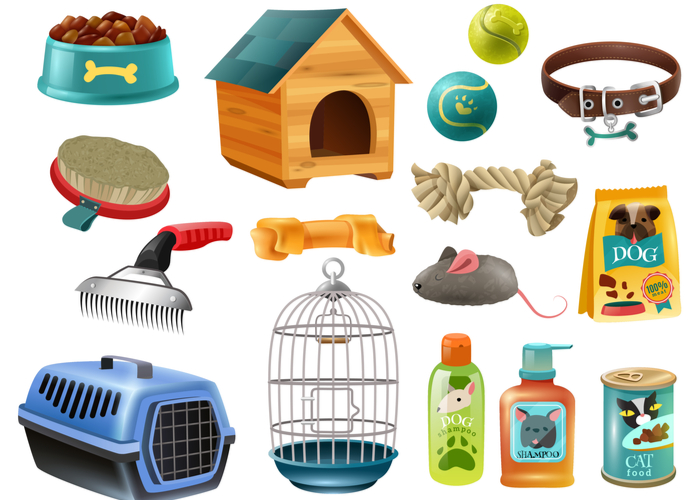
Prepare puppy supplies
It would help if you’ll also stock loads of dog supplies before bringing your pup home.
The following are the essential items you should have in store:
- A 4-6 ft. leash or a longer one for the training
- An adaptable collar with ID tags
- Puppy food
- A dog bed and crate with a room to grow
- Dog toys like a squeaky toy, a plush, and chew toy
- Brush, comb, or any grooming mitt suitable for your pet’s coat
- Metal or ceramic pet bowl for the food and water (plastic is not advisable for it may cause skin irritation and is easy to chew up)
When your puppy grows up, you’ll have to get more grooming supplies, toys, and preventive products.
Your dog’s veterinarian can help you find the items your fido needs.
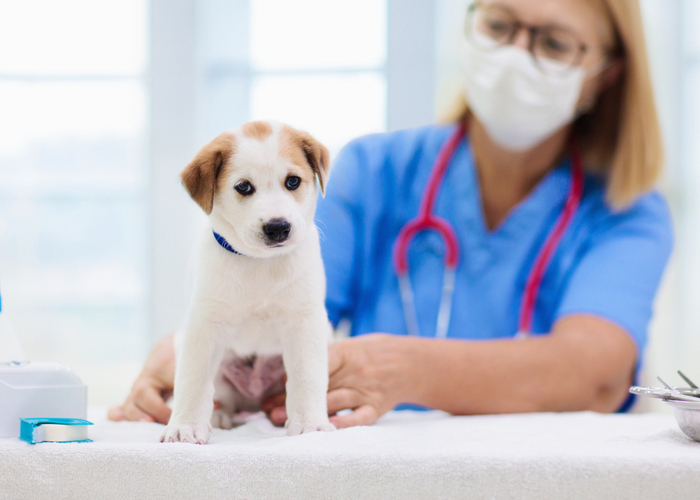
Find the Right Veterinarian
A few days after arriving at your home, your pup should visit a veterinarian even if there are no vaccines due.
It is an opportunity to ensure that the breeder, shelter, or rescue organization did not miss any health issues.
It’s crucial to select a reputable veterinarian before bringing your puppy home so that you won’t have to hustle to get a vet during emergencies.
How to find the right vet?
Look for a veterinary clinic with a stellar reputation and a location that is convenient for you.
Check to see if their rates are within your budget. Asking around and doing research are the best ways to discover a reputable veterinarian.
You may also get good recommendations from your family and friends who own dogs and from online reviews.
It would also help if you’d go on a hospital tour and meet some of the personnel to get a sense of the location.
Bring all of the paperwork provided by the breeder or adoption group with you on your puppy’s first visit.
Your veterinarian will examine your puppy and go over the puppy vaccination schedule with you.
They need many basic immunizations starting at the age of six weeks, so it’d be time-consuming.
Additionally, some vaccines need a booster shot within a year of the final dose in the initial series.
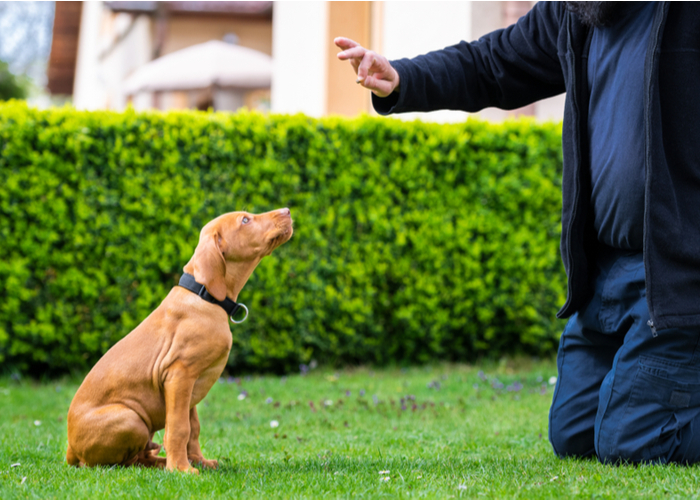
Learn how to raise a fido before getting a puppy
Puppies require extra attention to ensure that they grow up to be healthy and happy.
So, as a fur parent, you have to provide all your pup’s needs and ensure that he is getting the training he needs to be a better companion.
Here are some tips on how to raise your pup correctly:
- Create a healthy diet for your puppy with the help of your vet.
- Start the house training as soon as you get him home. It might take several weeks or months, so it requires more extended patience.
- Make sure your puppy is well socialized. Take your puppy to a variety of locations so that it can explore new sights, sounds and meet new people and pets.
- Let your puppy interact with other fidos as long as they are healthy and vaccinated.
- Enroll your pup in training classes with a reputable trainer to help him learn and socialize with other pets.
- Make a workout program a part of your daily routine.
- Maintain a regular schedule for puppy vet appointments and vaccinations.
- Play and bond with your pet by teaching him some fun and mentally stimulating games.
And lastly, you need to warm up your kids on how to behave around dogs and assign which family member will walk and feed the dog and when.
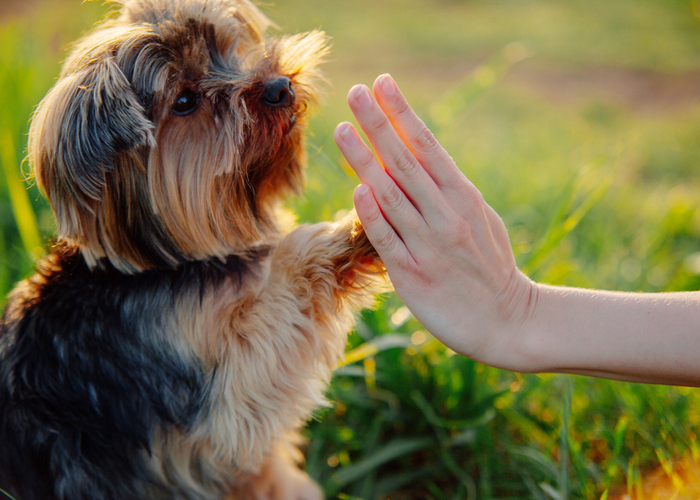
How To Find The Best Puppy For You
So, you’ve prepared everything and finally decided that it’s the right time to get a little companion.
But how can you find the right pup for you?
It’s a tough row to hoe, but creating a list of the dog traits you prefer and those you do not can help you make the right decision.
Considering the following can also help you figure out what you want.
Right Puppy Size for You
Do you want a tiny pup or a big one? The reality is small dogs suit apartments or sedentary life more while giant dogs need ample space.
On top of that, you’re likely to pay higher expenses on the food, supplies, and medications of giant fidos.
Desired Temperament
It’s a given that most of us would prefer family and kid-friendly fidos who are affectionate and intelligent.
However, would you prefer a couch potato or an active dog?
And if you want an active one, are you ready to put up with it if he’ll stay as it is until the adult stage, or do you want a pup that’ll calm down in a year or two?
When answering these questions, you’ll have to consider your lifestyle and how much exercise you can provide for your four-legged companion.
Coat and Color Preferences
Coat color and texture are something you need to consider as well.
If you already have a specific dog breed in mind, does it shed much? If yes, are you willing to deal with it?
Even the low-shedding breeds need the groomer’s help. And you’re wallet needs to be ready for it.
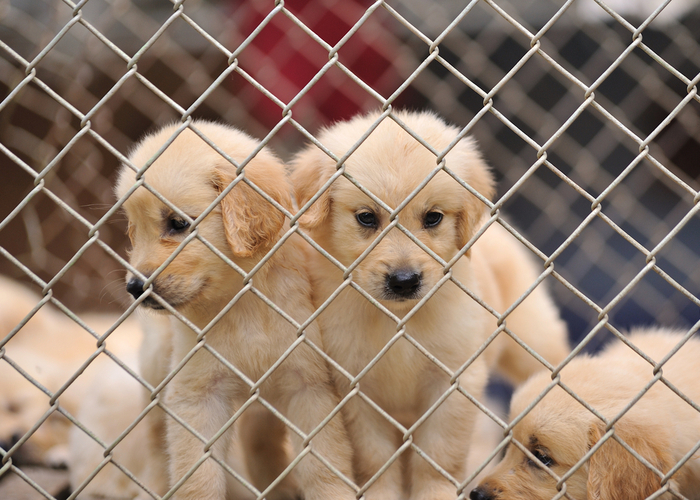
Where To Find The Right Puppy
If you can now picture out what kind of dog your heart desires, it’s time to let the search begin.
You have two ultimate choices when choosing a dog – a mixed breed and a purebred.
If you prefer a unique mixed breed dog, you can find them on local animal shelters and rescue groups such as Adopt A Pet and Petfinder.
Even if you haven’t made up your mind yet, you might fall head over heels for a mixed breed in your trip to local shelters and rescue organizations.
But if you want a dog with predictable size and coat type, a purebred dog may be the right one for you.
Although their health issues, temperament, and energy level aren’t always the same as their parents', they’re more predictable than mixed breeds.
We highly discourage dog owners from buying from backyard breeders or pet stores because their dogs usually come from puppy mills.
On the other side of the spectrum, dogs from classified ads and flea markets have no known backgrounds.
So there’s a high chance that the puppy they offer is sickly and unhealthy.
So, if you want a healthy purebred with complete pre-breeding examinations and medical records, it’d be best to get them from dog breeders with an excellent reputation.
Our Final Thoughts
To sum it up, the right time to get a puppy is when you are mentally, emotionally, and financially ready to raise a pet.
You also have to make sure that your home is conducive for puppies to dwell and learn, and you can provide time to feed, train, and bond with your puppy.
It will be easier if you have a partner that you can share the responsibility.
But if you’re single, you need to ensure you have the means to provide for their needs.
Spring and early or late summer are the recommended time to bring a puppy home.
And it’s best to wait until he turns eight weeks old before separating him from his mom.
Just bear in mind that they’re a significant investment.
And if you’re ready to make a long-time commitment, then you’ll know you’re prepared to welcome him to your home.


